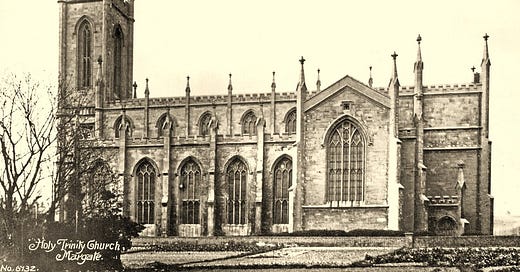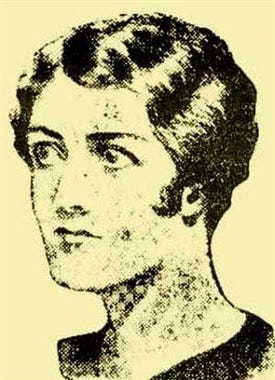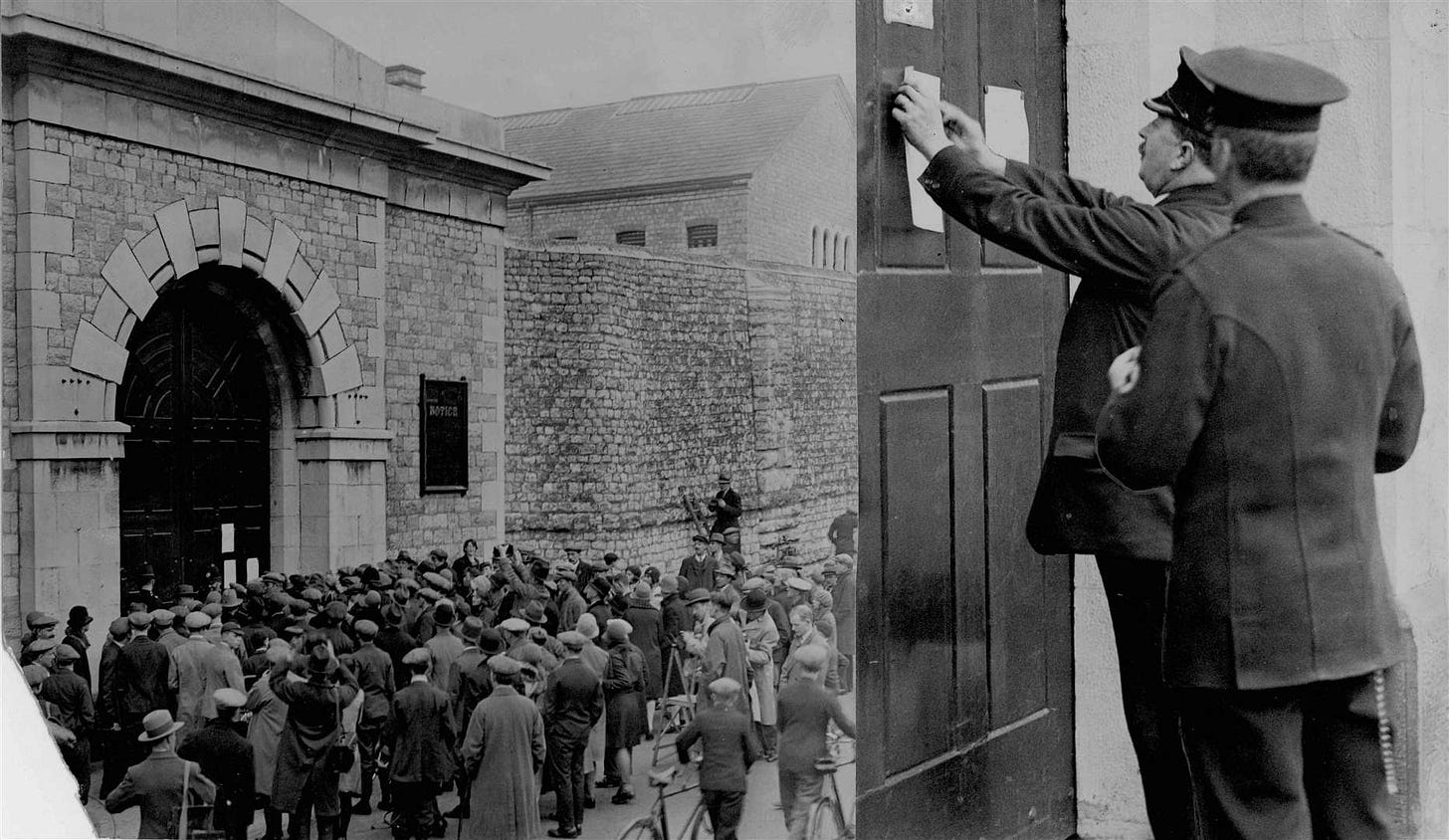"Margate People: William Edmunds and Darker Tales from Margate's Past
Uncovering the Legacy of a Local Architect and some secrets Beneath
I originally planned this article to be the second part of a seasonal piece in line with the theme of October and Halloween, focusing on lunatics and murderers. While I may be early in my writing career, I recognize the importance of taste in my subject matter. As I researched, I discovered that the descendants of some individuals involved in these stories are still living in Margate or have strong connections to the area. Given the gravity of the subject, I felt it was only right to reach out to these families for permission before proceeding.
This instalment incorporates the fascinating lives of Margate people, starting with the intriguing tale of William Edmunds. I’ve decided to continue with the theme of darker tales from Margate’s past, but without packaging it solely around the season. I needed to remind myself that while these stories excite me, they are based on events that actually happened and affected real people. So, I guess this is a bit of a rookie error—being passionate about the stories while forgetting the lives left behind. Enjoy this next instalment.
William Edmunds: The Architect Behind Margate's Landmarks
William Edmunds (1801–1844) was a notable architect from Margate, a seaside town in Kent, England. His work left a lasting impact on the town's architectural heritage, with several key buildings still standing as a testament to his vision. However, his story also has a darker side, particularly through the tragic lives of his family, including his daughter, Christiana Edmunds, whose involvement in a series of poisonings shocked the nation.
Early Life and Background
William Edmunds was born around 1801 in Margate to Thomas and Ann Edmunds. His father, originally a carpenter and surveyor, eventually became the proprietor of the White Hart Hotel in Marine Parade, Margate. The family was well-respected, and by 1821, Edmunds had already made his first significant contribution to the town by producing its first detailed street map.
In addition to his work as a surveyor and architect, Edmunds was a key figure in local public life. His ability to secure commissions for prominent buildings ensured that his name would become synonymous with the town’s growth during the 19th century.
Architectural Achievement
Holy Trinity Church Margate Designed by Edmunds
One of Edmunds' most significant architectural contributions was the Holy Trinity Church in Margate, built to accommodate the town's rapidly growing population. The original parish church, St. John’s, could no longer cope with the number of worshippers, prompting a competition for a new design. Edmunds’ proposal was selected from 24 submissions. The foundation stone was laid in 1825, and after some delays and additional funding, the church was finally consecrated in 1829.
Other works attributed to Edmunds include Margate Lighthouse, a symbol of the town’s maritime heritage, and Droit House, a key building in the harbor area. His designs helped to modernize Margate as it transitioned from a small fishing village into a bustling seaside resort during the Victorian era.
Scandal and Decline
Despite his professional achievements, Edmunds' life was marred by financial troubles and allegations of mismanagement. In the late 1830s, he became embroiled in a scandal involving the Margate Pier and Harbour Company. Accusations were made against Edmunds and Francis Cobb, the company treasurer, regarding an unpaid invoice for stone that was recorded but mysteriously disappeared from the company’s records. Though the incident did not lead to any formal charges, it damaged Edmunds' reputation.
Adding to his woes, by the early 1840s, Edmunds began to suffer from severe mental health issues. His wife later testified that in 1843, he had become insane and was confined to a private lunatic asylum in Southall for over a year. He returned home in 1844 but remained in ill health until his death.
Christiana Edmunds: The Margate Poisoner
Perhaps the most infamous member of the Edmunds family was William’s daughter, Christiana Edmunds. Born in 1829, Christiana became notorious for her involvement in a series of poisonings in Brighton in the 1870s.
Christiana had moved to Brighton and developed an obsession with her doctor, Charles Beard. After a failed attempt to poison Beard’s wife with strychnine-laced chocolates, Christiana began distributing poisoned chocolates to various shops in Brighton, hoping to deflect suspicion from herself. Tragically, her actions resulted in the death of a four-year-old boy, Sidney Barker, in 1871. Numerous others fell ill before the authorities connected the dots back to Christiana.
In 1872, she was arrested and put on trial for murder. During the trial, Christiana’s mother testified that there was a history of mental illness in the family, likely referring to William’s time in the asylum. Christiana was found guilty but was spared execution due to insanity and spent the rest of her life in Broadmoor Asylum.
Press sketch of Christina Edmund
Legacy
William Edmunds’ architectural works remain a prominent part of Margate's landscape, particularly Holy Trinity Church and the iconic Margate Lighthouse. His career exemplified the ambitions of a growing town seeking to establish itself as a premier seaside resort. However, his legacy is complicated by the misfortunes of his family, particularly his daughter Christiana, whose actions cast a long shadow over the Edmunds name.
In many ways, the story of William Edmunds is a reflection of Victorian society’s evolving attitudes toward mental health, with both his and Christiana’s experiences highlighting the often tragic outcomes for those struggling with mental illness in that era. Despite these challenges, Edmunds' contributions to Margate’s architectural history endure, symbolizing both the promise and the darker complexities of 19th-century life.
The Tragic Case of Henry Augustus Berney: A Dark Chapter in Margate's History
In the early 20th century, the seaside town of Margate, known for its beautiful beaches and vibrant tourism, was also a backdrop for a shocking crime that revealed the grim realities of life for some families. The case of Henry Augustus Berney, a Swiss cook accused of murdering his infant child, serves as a reminder of the social issues faced during this period. This article explores the details of the case, its implications for Margate, and the broader societal context surrounding it.
The Incident
Henry Augustus Berney was charged with the wilful murder of his third child, born in January 1907, while he was employed as a chef at the Imperial Hotel in Margate. At this time, he was living with Margaret Blackford, who worked as a bookkeeper at the same establishment. Their relationship was marked by economic hardship and questionable decisions, leading to tragic consequences.
After the birth of their third child, Berney arranged for the baby to be cared for by a woman named Mrs. Robinson for a fee of 7 shillings per week. A week later, he took the child away, claiming he would take it to friends in Devonshire. However, by mid-February, the baby’s body was discovered in the Thames, revealing that the child had been suffocated before being disposed of in the river
The Imperial Hotel Margate 1910
The Investigation
As the investigation unfolded, Margaret Blackford provided crucial testimony against Berney. She recounted how he had threatened her if she ever spoke about the child. In her statements, she detailed how Berney had lied about the child's whereabouts, eventually admitting to her that he had drowned the baby. Blackford's testimony was supported by other witnesses, who confirmed Berney's inconsistent accounts regarding the child's fate.
The medical examination of the body indicated foul play, leading to Berney’s arrest and subsequent trial at the Central Criminal Court. The case drew significant attention due to its horrifying nature and the socioeconomic factors at play
Links to Margate
Margate, a town that attracted visitors seeking health and leisure, also faced its share of social problems. The presence of hotels and seasonal employment often masked underlying issues such as poverty and instability. The Imperial Hotel, where Berney and Blackford worked, was emblematic of the seasonal labor market, where workers struggled to make ends meet.
This case highlights the darker side of Margate’s history, as it reflects how economic pressures could lead individuals to desperate acts. During this time, many families in the area were grappling with financial hardship, a situation exacerbated by the economic conditions following the Edwardian era. The working class often faced precarious living conditions, leading to difficult decisions regarding child care and welfare
Societal Implications
The tragic story of Berney and Blackford underscores the complex interplay between poverty, mental health, and criminal behavior. It raises questions about societal support systems for vulnerable families during the early 20th century. At that time, there were limited resources available for those struggling with financial difficulties or parenting challenges, which often left families isolated and without support.
The public's reaction to the case also highlights the stigma associated with poverty and crime. Berney’s actions were viewed through the lens of morality, with societal condemnation directed at both him and Blackford. The case serves as a historical example of how societal norms and expectations can shape the narratives surrounding crime, often overlooking the systemic issues that contribute to such tragedies
Conclusion
The case of Henry Augustus Berney is a haunting reminder of the complexities of human behavior and the impact of social circumstances. Margate, while often celebrated for its beauty and charm, was not immune to the darker aspects of life in the early 1900s. This tragic story serves to illuminate the need for greater understanding and support for families facing adversity, highlighting how history can inform our perspectives on contemporary issues.
Edward Huggins - The Violent Overseer
Edward Huggins was an infamous local overseer of the poor in Margate in the early 19th century. In 1809, Huggins brutally flogged several paupers in Margate’s poorhouse, an event that sparked national outrage. The flogging incident, in which Huggins used a horsewhip to punish men for minor infractions, was so brutal that it was reported in the national press. Despite a trial, Huggins was acquitted, and the case highlighted the cruel treatment of the poor in workhouses at the time. His acquittal led to widespread protests, and the case became a significant moment in the campaign for workhouse reform .
The Insanity of John Kirby
In 1806, John Kirby, a Margate laborer, was declared insane after a public display of violence and odd behavior. Kirby had reportedly attacked people on the streets, claiming to have visions of angels and demons. He was confined to an asylum in the town. His case was used as an example of the rise in mental illness, often attributed at the time to the stresses of living in an industrialized society. Margate, like many other coastal towns, became a hub for treatment due to its air and location, with Kirby's case exemplifying the types of people sent to these asylums.
The Tragic Tale of Rosaline & Sidney Harry Fox
Sidney Harry Fox emerged as a notorious figure in the 1920s, primarily known for his involvement in the murder of his mother, which captivated and horrified the British public. A resident of Margate, Fox's life was fraught with financial difficulties, and he turned to desperate measures that would ultimately lead to his downfall. Notably, he was also known to have worked as a rent boy, adding a layer of complexity to his already troubled life.
Sidney Harry Fox
In 1929, Fox took out a substantial insurance policy on his mother Rosaline, which raised immediate suspicions. Just days later, she died in a suspicious hotel fire in which Fox was present. His behavior in the aftermath was unsettling; he was reportedly more concerned about the insurance payout than his mother's death. This led investigators to scrutinize his motives closely.
The trial, held in 1930, drew intense media coverage, with newspapers sensationalizing every detail. The public was captivated by themes of greed and familial betrayal, as Fox's actions were portrayed as cold and calculated. The prosecution presented strong evidence linking him to the crime, including witness testimony and the timeline of events. Despite Fox’s defense team arguing for an accidental death verdict, the jury took only an hour to convict him.
The notice of execution is nailed up outside Maidstone Prison in April 1930. The piece of paper announced that Sidney Harry Fox had been hanged - and gave Fox the dubious honour of being the last man to swing for his crimes in the county.
Fox's trial became a media circus, with tabloids eagerly covering his every move and the courtroom proceedings. The sensational nature of the case highlighted the era’s fascination with crime and morality, leading to widespread discussions about justice and accountability. In the aftermath of his conviction, Fox was sentenced to death, and despite appeals for clemency, he was hanged at Maidstone Prison in April 1930.
This tragic tale remains a dark chapter in Margate's history, and I will be starting a monthly series on Substack dedicated to exploring the trial and its implications in more detail. I’ll delve into the media frenzy surrounding the case, the legal proceedings, and the impact on the community, so stay tuned for more insights in the new year!
It's another wrap on a very touchy subject. I'm hopeful about releasing the original article I had planned, but the respect for the descendants of the families comes first. It's a great quality to diversify in your role, and I have grown used to it in my professional career. I totally relish it.
"Borrowing Cats" is becoming established now, and I am excited to plan my articles and their releases. I'm particularly looking forward to January when I plan to start releasing the story of Sidney Harry Fox's trial. In the meantime, I have some very exciting stories of Margate's past to share.
If you'd like to receive the articles as they are released, please consider subscribing if you haven’t already. And if you can, please buy me a coffee, as it helps me research these articles and bring them to you. Thank you!









Fascinating, I’m really interested in these types of posts, really well researched , considered and great writing, thank you for sharing
Been trying to sit down to read this one for two days. Well worth the wait!